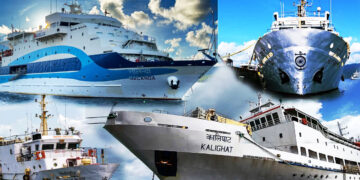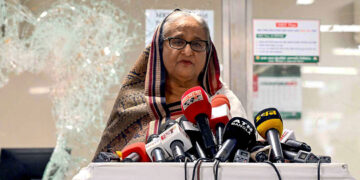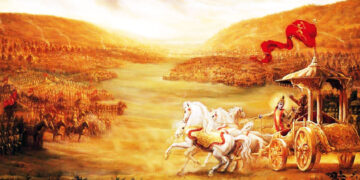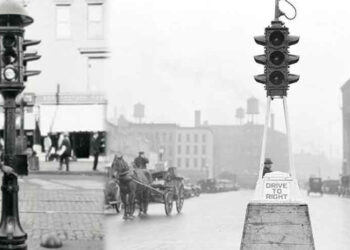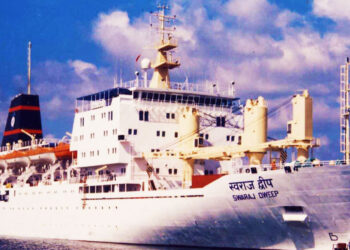Introduction
The Mahabharata, an epic of monumental significance in Indian culture, narrates the story of the Kurukshetra War and the complex lives of the Pandavas and Kauravas. This ancient text is not only a revered spiritual guide but also a source of historical and cultural insight. This article delves into the historical accuracy of the Mahabharata, examining claims by Hindu sages, archaeological evidence, scholarly analyses, and contemporary research findings.
1. The Battle of Kurukshetra: Fact or Fiction?
1.1 The Battle’s Description
The Mahabharata describes the Battle of Kurukshetra as a massive conflict that lasted eighteen days, involving intricate military strategies, divine interventions, and personal rivalries. Key figures include Arjuna, Krishna, Bhishma, and Drona, with Krishna’s discourse in the Bhagavad Gita being a central element of the narrative.

1.2 Claims by Hindu Sages
Sage Vyasa’s Accounts: Vyasa, the sage credited with composing the Mahabharata, described the battle in great detail, suggesting it as a significant historical event. His accounts include descriptions of advanced weaponry, strategic maneuvers, and divine presence on the battlefield.
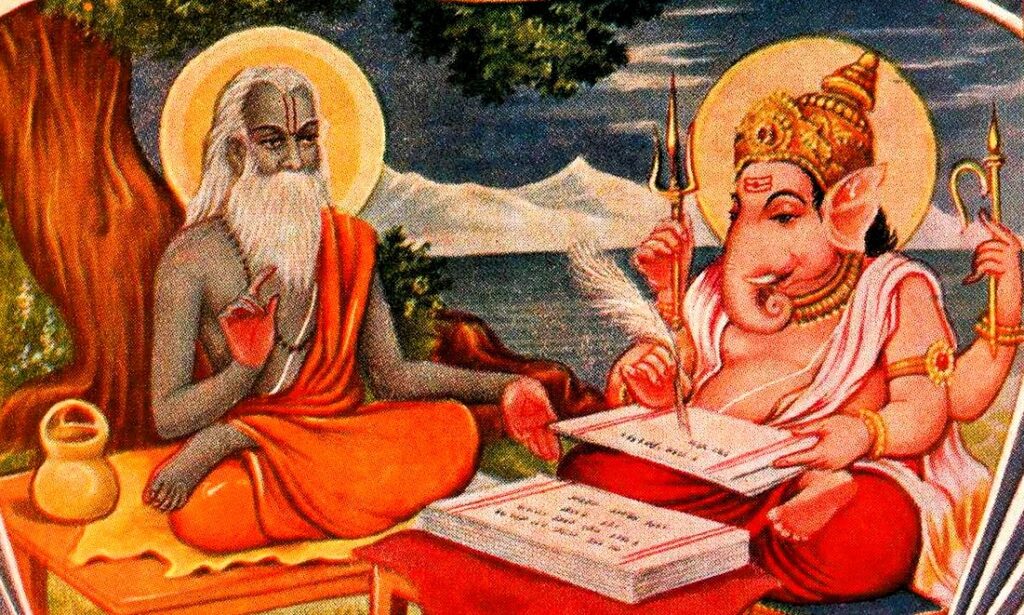
Claim: Vyasa’s accounts are considered by many as records of real historical events rather than mere myth. His detailed descriptions provide a vivid portrayal of the battle’s scale and complexity, suggesting that the Mahabharata’s narrative might be based on actual historical conflicts.
Detailed Scriptural Evidence:
Bhishma Parva: The Bhishma Parva (Book of Bhishma) contains detailed accounts of the military formations and strategies used in the battle. The descriptions of formations such as the Chakravyuha and Padmavyuha are specific and complex, indicating a deep understanding of warfare tactics.
- Event: The formation and breaking of the Chakravyuha by Abhimanyu.
- Scriptural Reference: “When the Chakravyuha was arrayed in battle, Abhimanyu, son of Arjuna, entered it and fought valiantly until his last breath.”

Drona Parva: The Drona Parva (Book of Drona) describes the use of various weapons, including celestial weapons (Astras) like Brahmastra, which were considered highly advanced.
- Event: The use of Brahmastra by Ashwatthama.
- Scriptural Reference: “Ashwatthama, in his fury, invoked the Brahmastra, a weapon of immense destruction, to annihilate the Pandavas.”
1.3 Archaeological Evidence
Hastinapura Excavations:
- 1950s Excavations: Archaeological investigations at Hastinapura, the ancient capital of the Kuru dynasty, have uncovered artifacts and structural remnants that correspond with the descriptions found in the Mahabharata. Excavations revealed pottery shards, tools, and city remains indicating a well-established urban center during the period associated with the epic.
- Detailed Findings: The excavations uncovered various layers of habitation, including remnants of city fortifications and evidence of advanced urban planning. Pottery shards and tools found at the site suggest that Hastinapura was a thriving settlement during the time period described in the Mahabharata. The city’s fortifications, including walls and gates, align with descriptions of a strategically important urban center in the epic.
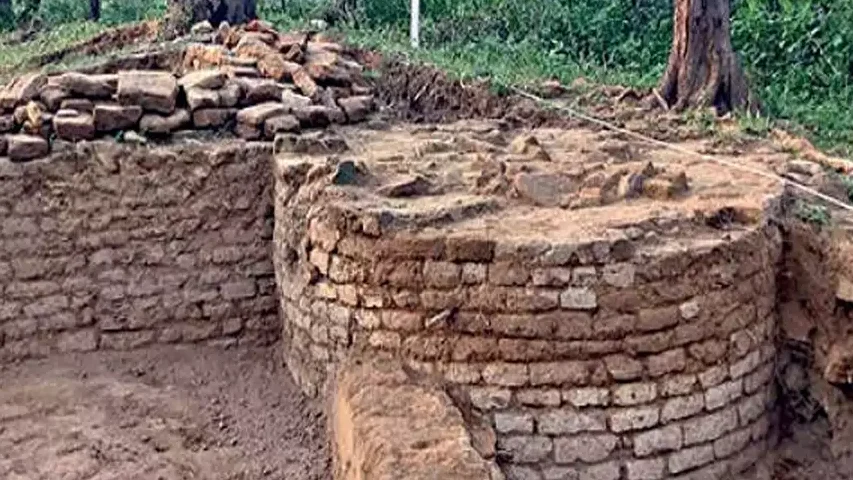
Kurukshetra Region:
- 2010 Excavations: Recent archaeological efforts in the Kurukshetra region have revealed significant artifacts, including ancient weaponry and remnants of fortified structures. These findings have sparked discussions about their connection to the Kurukshetra battlefield described in the Mahabharata.
- Detailed Findings: Artifacts discovered include weaponry resembling the descriptions from the epic, such as ancient arrowheads and spears. Structural remnants, such as defensive walls and fortifications, suggest the presence of a significant battle site. The underwater discoveries in nearby regions have also included ancient artifacts and remnants that align with the Mahabharata’s description of the city’s grandeur.
1.4 Scholarly Analysis
Historical Memory vs. Myth: Scholars debate whether the Mahabharata’s events should be viewed as historical records or symbolic narratives. Some argue that the epic reflects real events, while others view it as a blend of myth and history.
- Michael Witzel’s “Early Sanskritization”: Witzel explores the Mahabharata’s reflection of ancient conflicts and societal structures. His research suggests that while the epic may be based on real historical events, it is also heavily embellished with mythological elements. Witzel’s analysis focuses on the evolution of ancient Indian literature and its role in shaping historical memory.
- Romila Thapar’s “The Past and Prejudice”: Thapar examines the epic within the broader context of Indian historical and mythological studies. She analyzes how the Mahabharata’s narrative may have been influenced by the socio-political climate of ancient India, suggesting that while it reflects real societal dynamics, the events are likely mythologized.
2. Dwaraka: The Lost City
2.1 The City’s Significance
Dwaraka, associated with Lord Krishna, is described in the Mahabharata as a prosperous and advanced city. Its existence and location have been subjects of significant debate.
2.2 Underwater Discoveries
Marine Archaeology:
- 1980s Discovery: Underwater explorations off the Gujarat coast revealed submerged ruins, including city walls and structures, sparking speculation about their connection to Dwaraka.
- Detailed Findings: The underwater ruins include remnants of city walls, defensive structures, and artifacts such as sculptures and pottery. Carbon dating and geological studies suggest that the submerged city dates back to a period that aligns with the Mahabharata’s timeline. The discovery of advanced urban planning features in the submerged ruins supports the notion that they could be linked to the legendary Dwaraka.
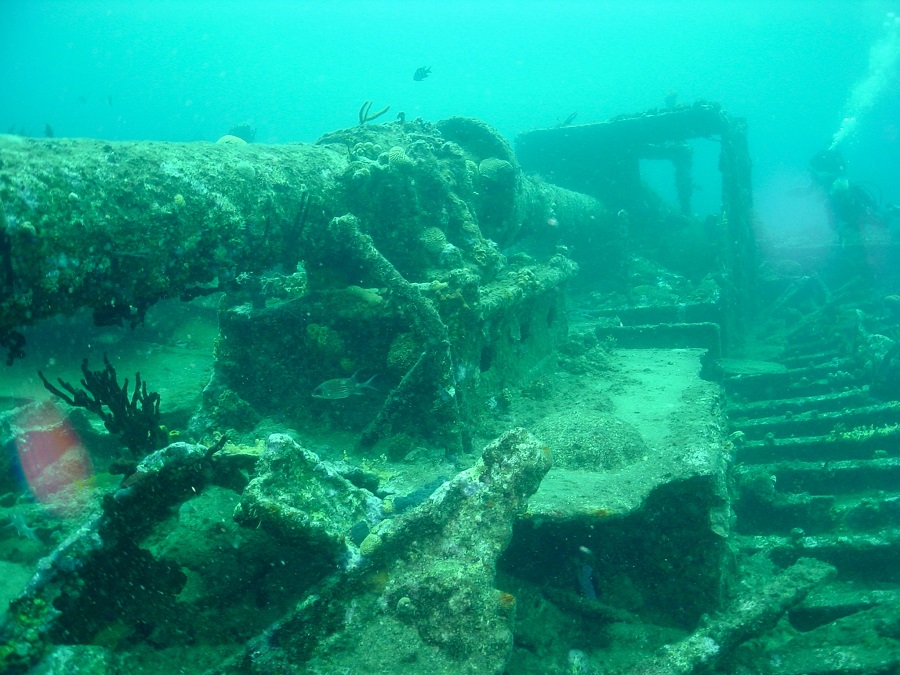
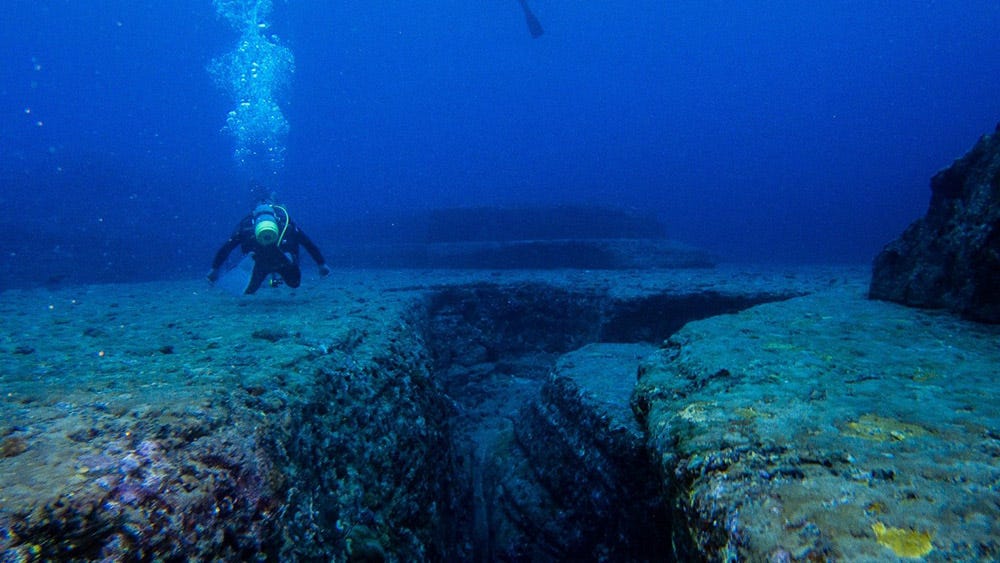

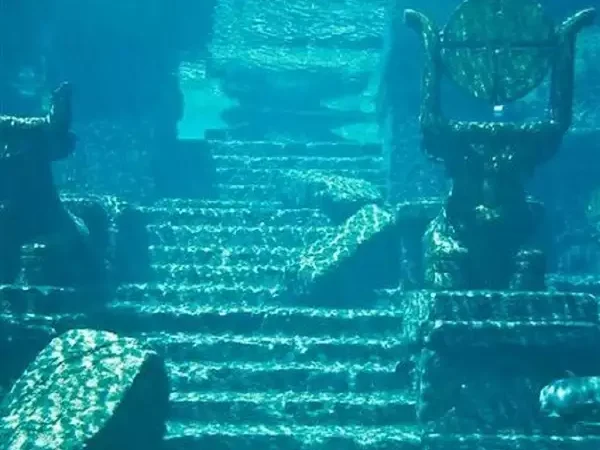
Scientific Analysis:
- Recent Studies: Techniques like carbon dating and underwater surveys have provided insights into the age of the Dwaraka ruins. While these studies offer valuable context, conclusive evidence directly linking the ruins to the Mahabharata remains limited.
- Detailed Findings: Recent studies have used advanced dating techniques to estimate the age of the submerged city’s artifacts and structures. While these studies have identified the ruins as ancient, they have not provided definitive proof that these ruins correspond to the city described in the Mahabharata. The ongoing research continues to explore the historical significance of these findings.
3. Comparative Perspectives: Mythology and History
3.1 Mythological Interpretations
The Mahabharata is often viewed as a blend of myth and reality, with allegorical and symbolic interpretations playing a significant role in understanding its narrative.
- Wendy Doniger’s “The Hindus: An Alternative History”: Doniger offers an alternative perspective on the Mahabharata, emphasizing its symbolic and allegorical dimensions rather than focusing solely on historical claims.
- Detailed Analysis: Doniger’s analysis explores how the Mahabharata’s narrative incorporates mythological elements and allegories to convey moral and philosophical teachings. Her work suggests that while the epic contains historical elements, it is also a rich tapestry of symbolic storytelling.
3.2 Historical Research
Historical research involves analyzing the Mahabharata alongside other ancient texts and inscriptions to assess its historical claims and context.
- D.D. Kosambi’s “The Culture and Civilization of Ancient India in Historical Outline”: Kosambi provides a detailed analysis of the Mahabharata’s historical context, reflecting on its portrayal of ancient Indian society and its influence on historical studies.
- Detailed Analysis: Kosambi’s work examines the Mahabharata’s depiction of ancient Indian social structures, including political, economic, and cultural aspects. His analysis places the epic within the broader context of ancient Indian civilization, suggesting that while it reflects historical realities, it also incorporates mythological elements.
4. Impact on Contemporary Beliefs
4.1 Religious Practice
The Mahabharata’s perceived historical accuracy influences contemporary religious practices, including rituals and festivals inspired by its narratives.
4.2 Public Perception and Debate
Debates about the Mahabharata’s historical accuracy shape public perception and influence how the epic is understood and appreciated in modern times.
Conclusion
The Mahabharata remains a deeply influential text, blending historical events with mythological elements. The examination of its historical accuracy involves analyzing claims by Hindu sages, archaeological evidence, and scholarly interpretations. While concrete proof remains elusive, ongoing research continues to shed light on the epic’s complex legacy.
References
- Sage Vyasa’s Works
- Archaeological Survey of India’s Reports
- Marine Archaeology Study on Dwaraka
- Scientific Reports on Dwaraka Ruins
- The Hindus: An Alternative History by Wendy Doniger
- The Culture and Civilization of Ancient India in Historical Outline by D.D. Kosambi

